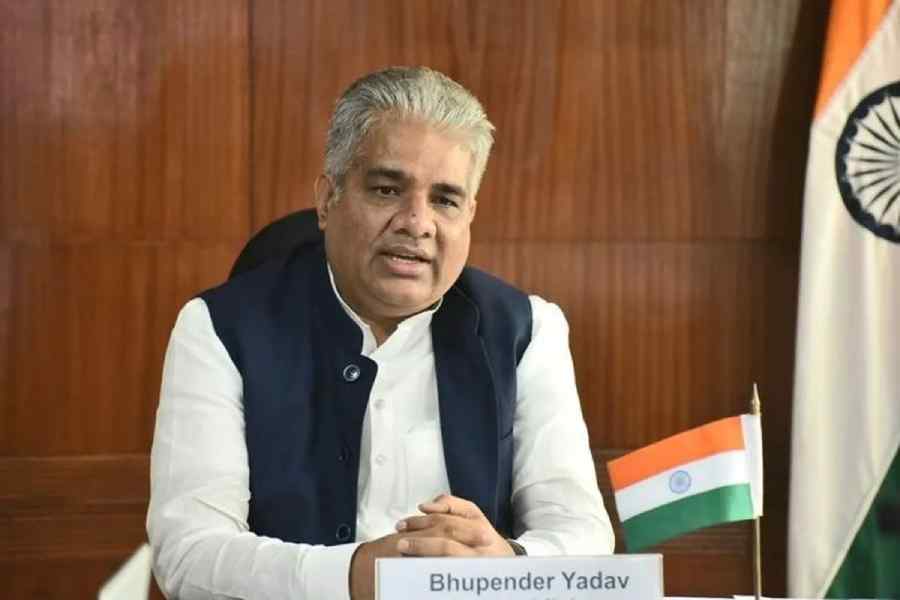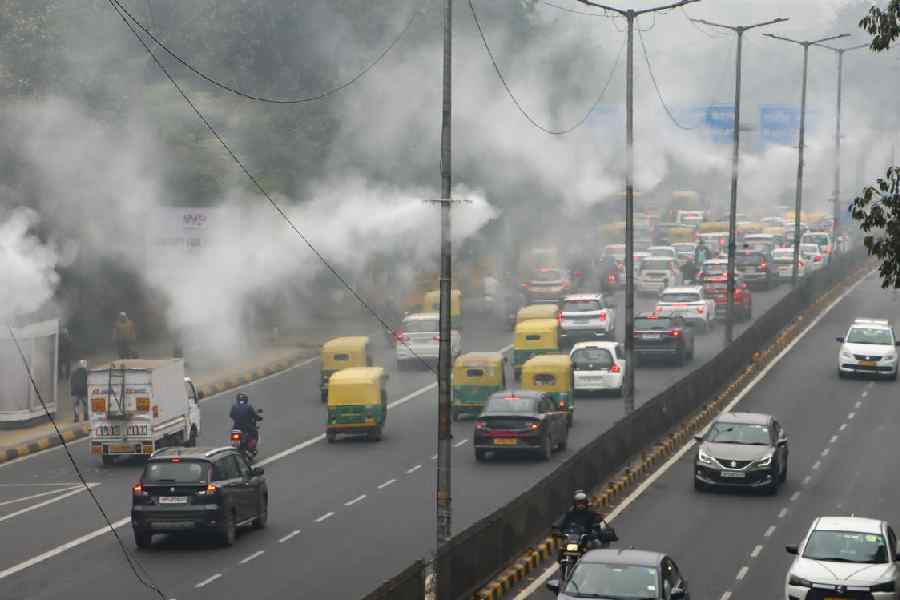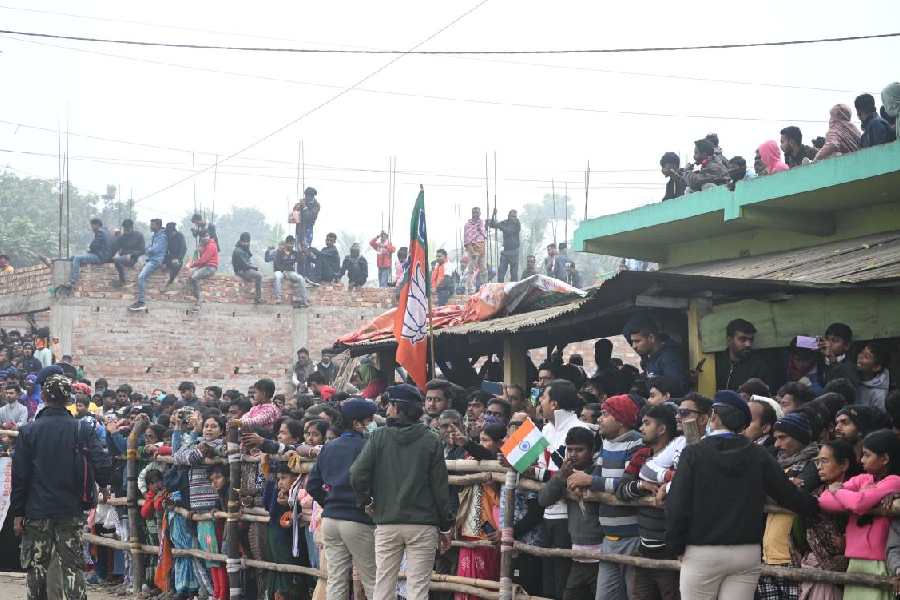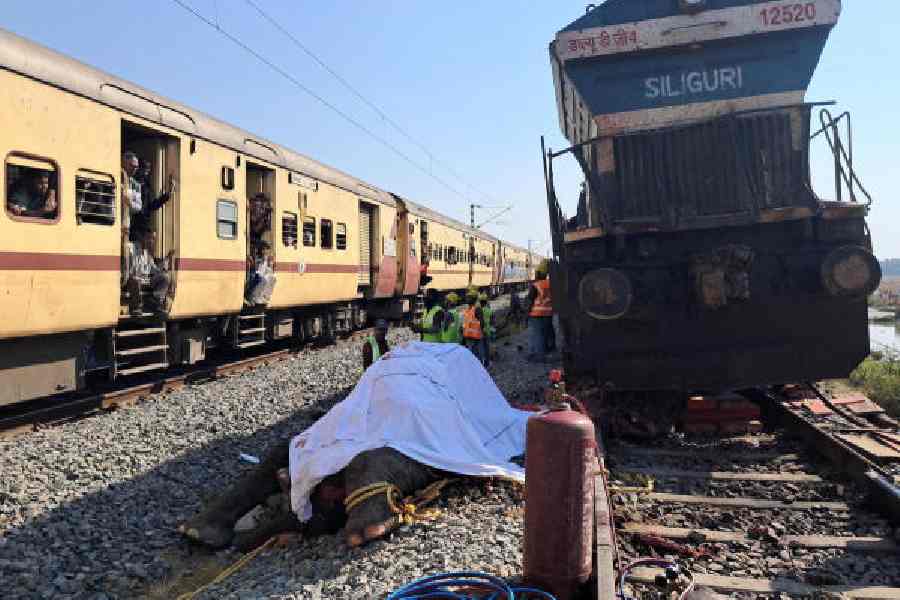 |
New Delhi, Feb. 25: In a fairground in rural Haryana, farmer Rajbir Singh stood today with his murrah buffalo, surrounded by a cacophony created by the moos and bellows of other livestock and the chatter and shouts of people.
The buffalo yields 20 litres milk a day — four times more than is available from India’s average buffalo — and Singh has pitched the animal into a livestock contest organised by the National Dairy Research Institute (NDRI) in Karnal, Haryana. Three years ago, Singh’s father Jit Ram proudly picked up the top prize at the annual competition for Ganga, their crossbred cow that yielded 60 litres milk a day.
Animals like Ganga and the murrah buffalo have played a key role in bringing about India’s white revolution — a steady growth in milk production that doubled from 54 million tonnes in 1990 to 112 million tonnes in 2010.
But scientists and livestock sector analysts fear that a rise in domestic milk demand and inadequate efforts to transfer milk-enhancing technologies from research laboratories to livestock farmers threaten such gains.
The national demand for milk is expected to jump from 112 million tonnes this year to 180 million tonnes by 2020, necessitating a 5.5 per cent annual growth in milk production, the economic survey released today said.
“India may need to resort to imports from the world market if it fails (to achieve 5.5 per cent annual growth),” the survey warned. The annual growth in milk production over the past five years has remained below 5 per cent. (See Chart)
“We have a fairly good idea about what technologies we need to deploy to increase milk production — but the technologies haven’t spread fast enough or far enough yet,” said Shiv Prasad, head of livestock production at the NDRI.
One such technology is crossbred cattle like Jit Ram’s Ganga — created by the artificial insemination of frozen-and-thawed semen from high-yielding Holstein cows from the Netherlands into eggs from hardy, disease-resistant local cattle.
India has only 12 million crossbred cattle among an estimated cattle population of 203 million, Prasad said. While an average nondescript cattle in India yields less than 2 litres milk each day, high productivity crossbred animals deliver 12 litres or even higher.
“Crossbreeding demands infrastructure for artificial insemination, liquid nitrogen cannisters to store frozen semen, trained veterinarians, and healthcare services for livestock at the grassroots level,” Prasad told The Telegraph.
The economic survey has listed ineffective breeding programmes, limited availability of quality fodder, inadequate veterinary infrastructure, lack of vaccinations, and a limited capacity for milk processing among threats to sustaining India’s milk gains.
The survey said economic growth and increased health consciousness among people is likely to increase the proportion of income spent on milk and milk products in the coming years. While the domestic demand of milk has grown at about six million tonnes per year, the incremental increase in milk production over the past 10 years has been only 3.5 million tonnes per year.
NDRI researchers have spent two decades trying to promote crossbred cattle and selective breeding in buffaloes which contribute up to 55 per cent of milk production in India. “The spread of such technology has been somewhat uneven,” Prasad said.
RJD leader Lalu Prasad, whose love for bovines is well known, said the production scare was inevitable. “Somebody should find the cost of kutti (hay cut down to feed cattle) in the market. It’s Rs 6 per kg and still not available in the market. I have 160 cows and still I cannot get someone who can supply me with 10 trucks of kutti. In fact, due to mechanised harvesting of wheat, half the hay is left in the fields and later burnt by farmers. Producing milk has become unprofitable and that is why nobody is opting for milk production,” Lalu Prasad said.











